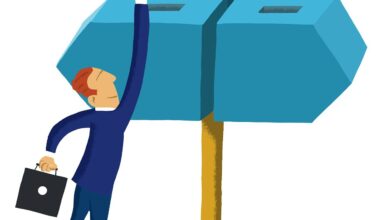Understanding the Spread Between Fixed and Adjustable Mortgage Rates
When navigating the complex world of mortgages, understanding the spread between fixed and adjustable rates is essential for loan applicants. Fixed-rate mortgages provide stability since the interest rate stays the same throughout the loan term. Homebuyers favor this option when they plan to stay long-term in a property. Predictable monthly payments make budgeting easier, providing peace of mind in a fluctuating market. Conversely, adjustable-rate mortgages (ARMs) often initially offer lower rates that can entice borrowers. However, these rates are subject to periodic adjustments based on market conditions, resulting in potential variability and uncertainty. This volatility can lead to unexpectedly high payments as the interest rate changes. Analyzing one’s financial situation, including future plans and risk tolerance, is crucial. Borrowers should carefully compare these options to find the best fit for their individual needs. Monitoring economic indicators helps in predicting potential shifts in rates. Making informed decisions today can significantly impact future financial wellness. Sometimes consulting a financial advisor can provide additional insights into which mortgage structure aligns best with long-term financial objectives, ensuring more informed choices amid fluctuating mortgage trends.
Long-term financial goals should greatly influence the choice between fixed and adjustable mortgages. Fixed-rate loans allow for easier planning since payments remain constant over decades. Individuals looking for predictability prioritize this stability for budgeting purposes. They avoid the potential frustrations and uncertainties associated with variable rates causing sudden increases. Adjustable-rate mortgages, conversely, draw in borrowers with their tempting introductory rates that make initial payments significantly lower. This often leads to short-term financial relief but could result in substantial long-term expenses. Ultimately, it’s a balancing act—choosing between short-term savings and long-term costs. ARMs require an understanding of rate caps and adjustment frequency, which influence the total cost over time. Additionally, attention must be paid to market forces that affect interest rates. Economic conditions, including inflation and Federal Reserve policies, can substantially impact the spread between these mortgage types. Homebuyers should also evaluate their own situations; if they anticipate a move within a few years, an ARM might be sensible. However, if stability is required, a fixed-rate loan provides substantial reassurance during fluctuating economic conditions, cultivating a sense of financial security.
Market Trends and Historical Perspectives
To gain insight into the future of mortgage rates, it is essential to consider market trends and historical perspectives. Historically, fixed rates have offered a safety net during times of economic instability, prompting wise financial management. Conversely, ARMs can have significant advantages when interest rates decline, making them appealing for certain periods. Investors in real estate should observe how past market behavior influences current trends. Macro-economic factors such as employment rates, inflation, and consumer confidence index dramatically impact mortgage interest rates. It’s essential to be cognizant of these indicators. Furthermore, by analyzing historical data, potential borrowers can assess how fixed and adjustable rates performed during previous economic cycles. Future predictions often derive from this analysis, providing valuable information when considering a mortgage strategy. Buyers should also reflect on their potential long-term stay in a property. Families anticipating a stable future often lean toward fixed mortgages in unpredictable times, ensuring payments remain manageable regardless of market fluctuations. Staying informed and adaptable can lead to the most favorable decision and securing a financially viable home loan.
Understanding your financial situation is crucial when looking into the differences between fixed and adjustable-rate mortgages. These elements significantly impact overall costs. Before committing, prospective borrowers should thoroughly evaluate their current and future financial health. This includes assessing income stability, potential job changes, and personal lifestyle goals. Changes in income could affect one’s ability to handle varying mortgage payments associated with ARMs. In contrast, fixed-rate mortgages allow homeowners to plan budgets reliably. Also, understanding personal risk tolerance plays a fundamental role in this decision-making process. Some individuals can handle fluctuations in their payments, while others need the consistency that fixed rates offer. Personal circumstances like whether you’re starting a family or planning to retire can influence the choice. Researching various lenders and comparing quotes can lead to financially advantageous decisions. Moreover, it’s vital to ask the right questions regarding each type of loan and thoroughly understand the terms. Investors or homebuyers who remain mindful of their personal finances and comprehend the trade-offs facing them will be better positioned to secure the most appropriate mortgage type.
The Impact of Economic Conditions
The dynamic nature of economic conditions directly impacts fixed and adjustable mortgage rates. Borrowers should stay informed about economic trends, as they drive fluctuations in interest rates. Inflation, for instance, often signals rising interest rates due to central bank policies aimed at managing economic stability. Understanding that the Federal Reserve raises or lowers rates based on economic performance can guide borrowers. This is crucial for those contemplating an ARM, as they may encounter rising rates during periods of inflation, affecting their overall cost. Conversely, favorable economic times could maintain lower fixed mortgage rates, attracting new homeowners. Thus, monitoring economic indicators helps anticipate these changes. Housing market fluctuations also influence mortgage rates, highlighting the interconnectedness of these financial products. Potential buyers can capitalize on advantageous situations by reviewing recent market trends and economic forecasts. Other key factors include consumer confidence indexes and how they influence buyers’ willingness to enter the market. By embracing this analysis, individuals can make sound choices and position themselves advantageously, ensuring they are not caught off-guard by unexpected rate hikes or declines in the mortgage landscape.
Adjustable-rate mortgages can carry hidden costs affecting overall affordability. These fees may arise from penalties associated with early repayment or other transaction costs. Borrowers need to understand and comprehend all conditions outlined in their contracts to avoid unforeseen financial burdens. Should rates rise significantly, mortgage payments can increase drastically, creating budgeting challenges for unsuspecting homeowners. Therefore, it’s crucial to calculate potential payment increases when considering an ARM versus a fixed-rate mortgage. Establishing a realistic budget incorporating possible future increases can safeguard against overextending finances. Moreover, potential borrowers should seek expert opinions when comparing different mortgage options and consider onsite evaluations. Home loan workshops and seminars offer valuable resources and information that can clarify the distinct features of both loan types. Understanding the differences in spreads between fixed and adjustable rates allows borrowers to make wiser choices. Awareness leads to increased financial confidence while navigating the mortgage landscape. Homeownership is an essential aspect of personal finance strategies, and embarking on this journey requires careful planning and informed decision-making to reach successful outcomes.
Conclusion: Making the Right Choice
In conclusion, deciding between fixed and adjustable mortgage rates necessitates thorough research. The implications of each choice significantly affect financial wellness and homeownership strategies. Evaluating one’s lifestyle, financial goals, and market trends leads to sound decision-making. Understanding the inherent risks associated with ARMs compared to the stability offered by fixed-rate mortgages can further clarify one’s preference. As individuals navigate this journey, it is wise to consult trusted financial professionals for personalized advice tailored to their circumstances. These professionals can help dissect loan contracts and provide potential ramifications, illuminating the path forward. Engaging in comprehensive discussions regarding the personal financial situation can reveal new insights and lead to more informed options. Borrowers should prioritize learning about potential future rate fluctuations to make knowledgeable purchasing decisions. Resetting expectations based on market conditions ensures adaptability in an ever-changing economy. Cultivating an awareness regarding the nuances of fixed and adjustable mortgages lays a strong financial foundation. With a proactive mindset, buyers can successfully navigate their mortgage journey, making well-informed choices that lead to satisfying homeownership experiences.


